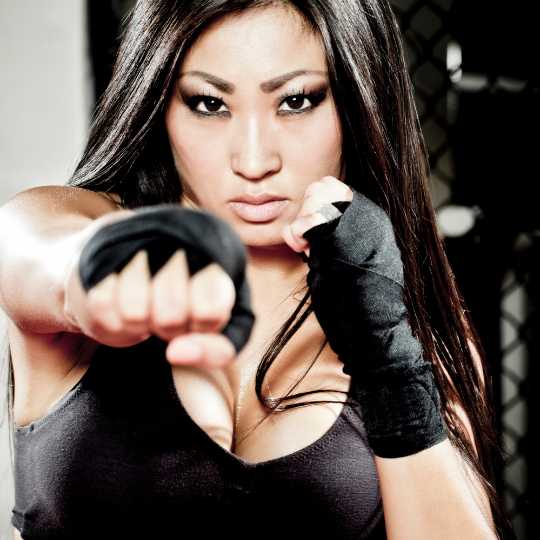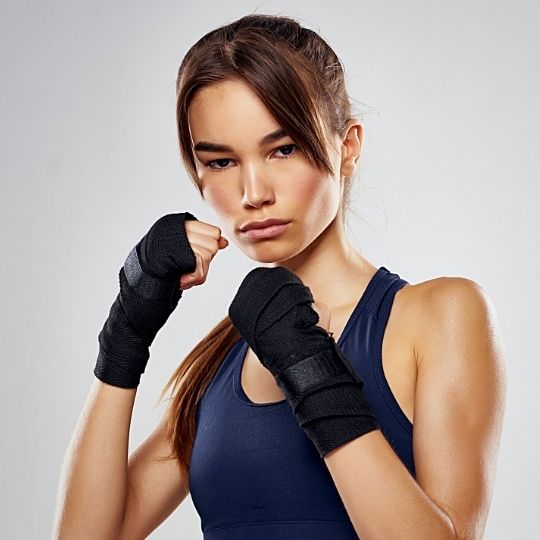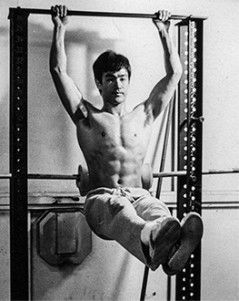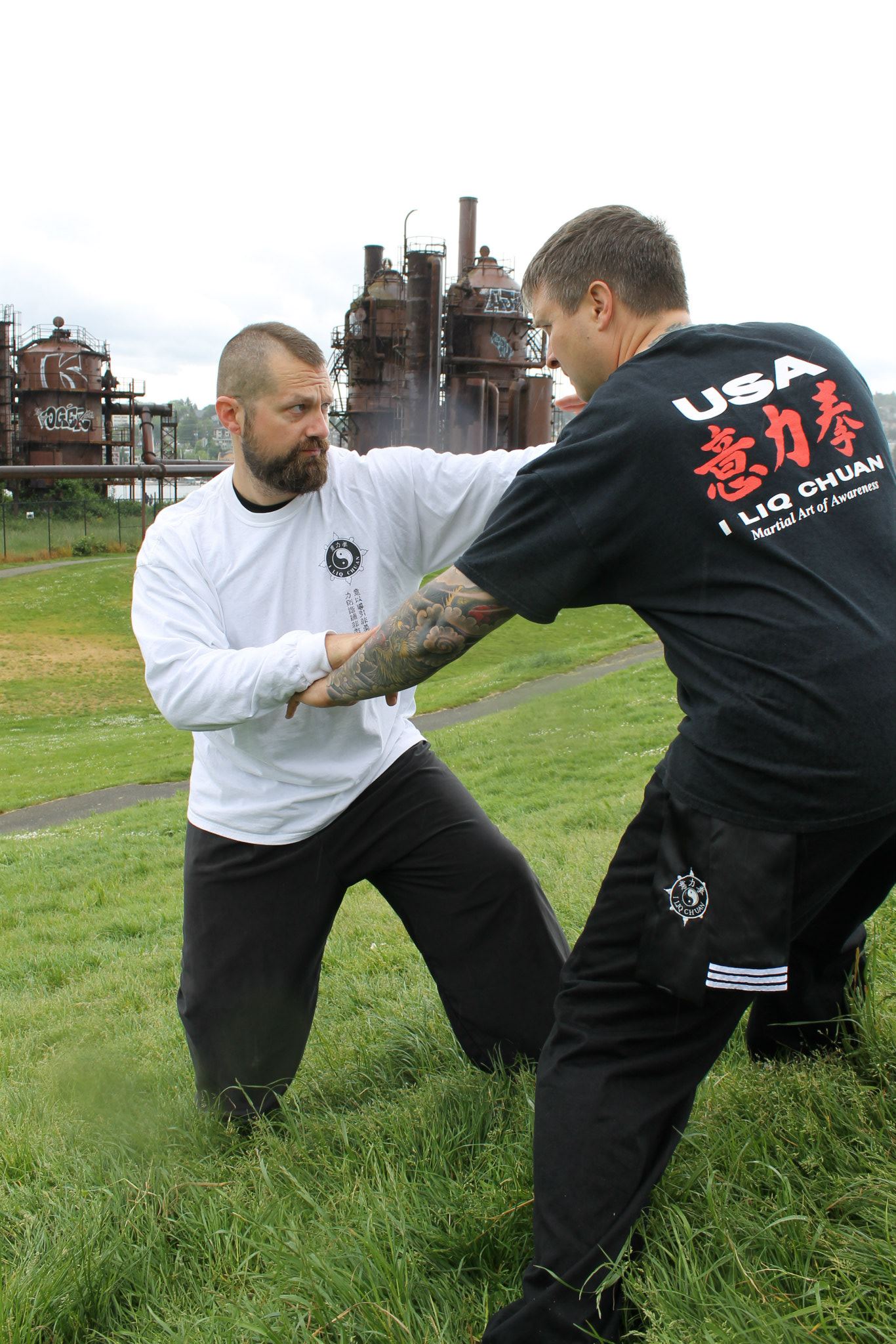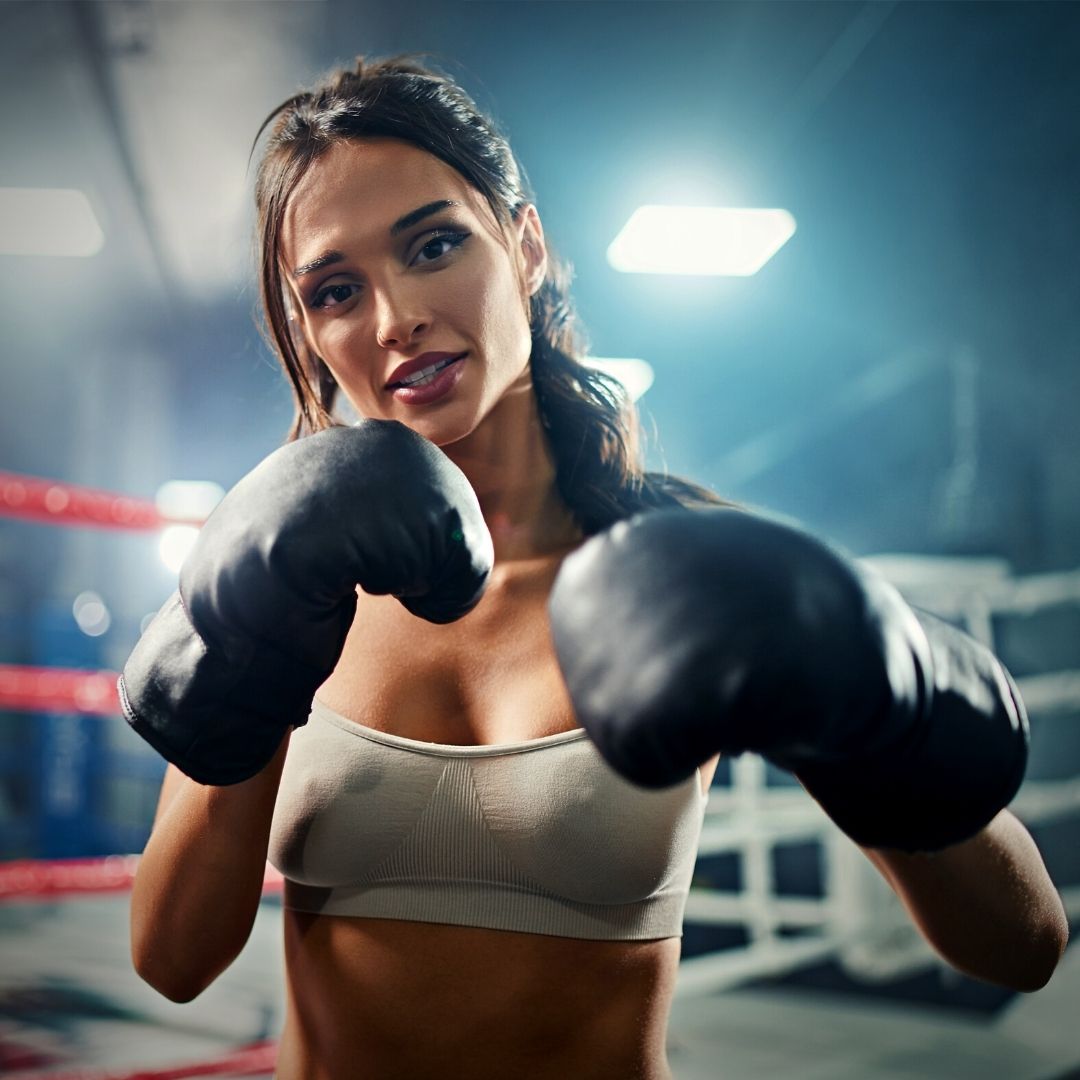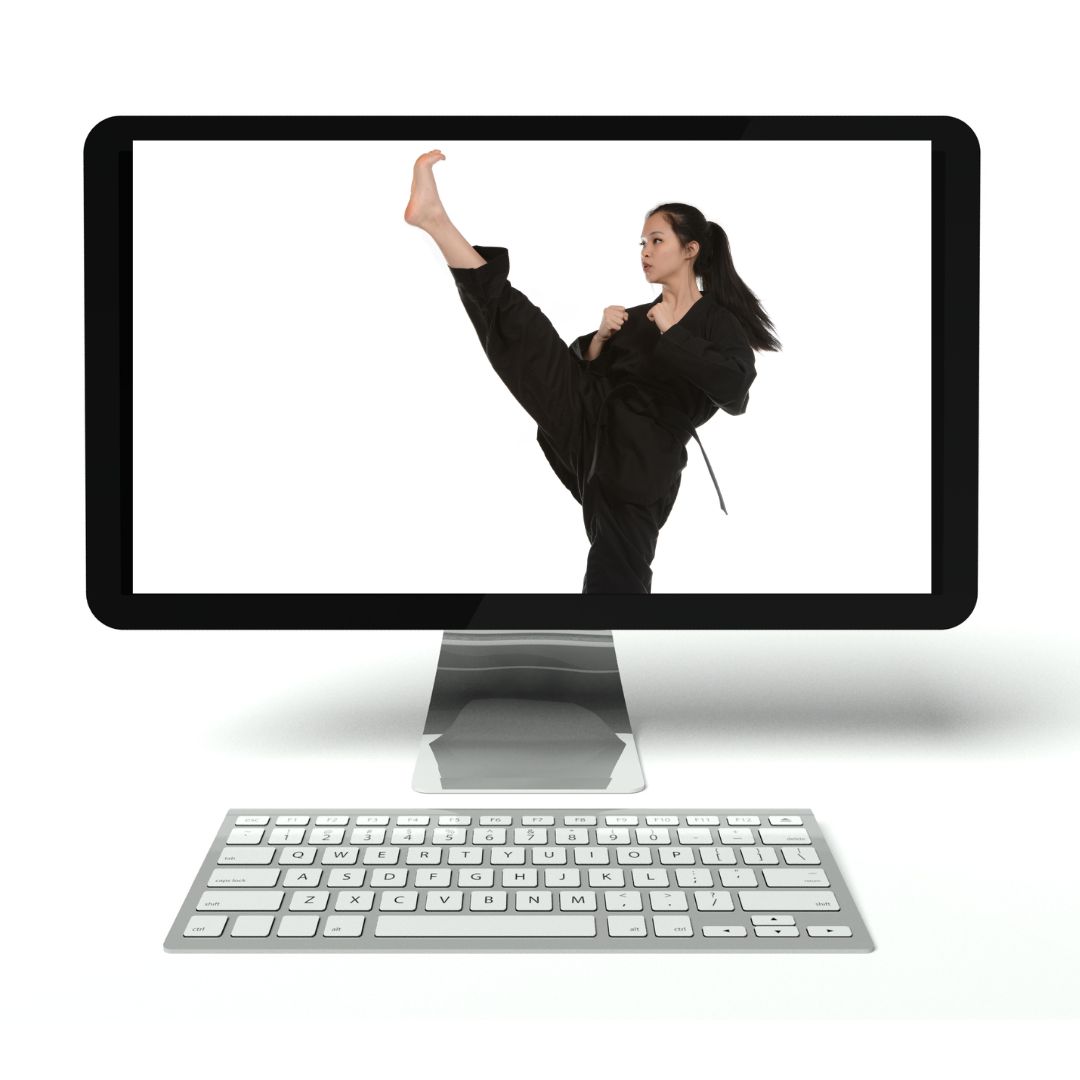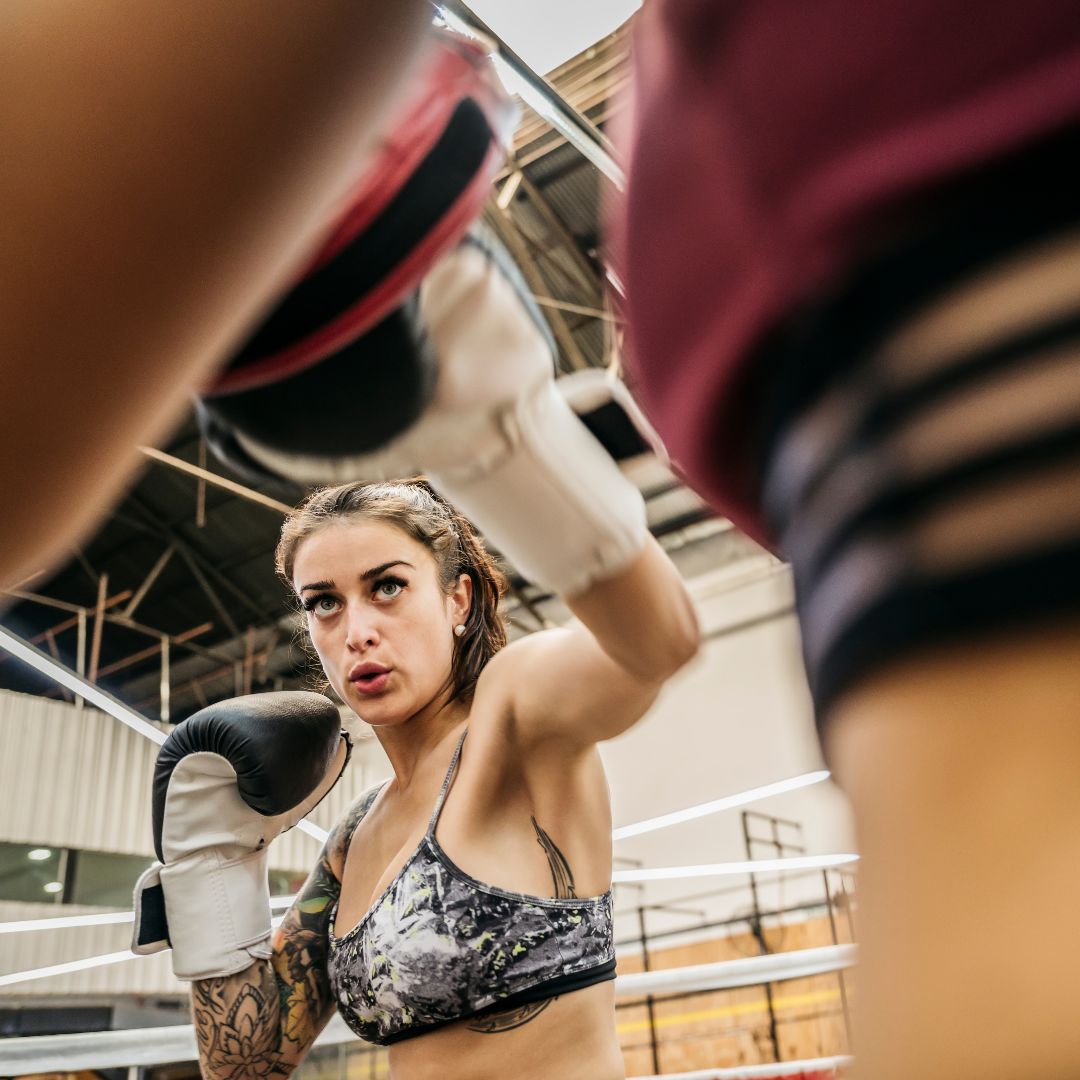
Looking to elevate your martial arts training? Focus mitts and pads are the key to enhancing your skills and improving your performance.
Or are they?
Training with mitts and pads is a widely accepted practice in martial arts, but is it truly the most effective way to hone your striking skills?

Critics argue that it can lead to bad habits, incorrect distancing, and wasted training time. Yet, despite these criticisms, many high-level coaches still incorporate mitt work into their routines. Could it be that there’s more to this training method than meets the eye?
What if the very criticisms of mitt work are also the keys to understanding its true value?
In this article, we will delve into the pros and cons of mitt work, addressing common concerns while highlighting how this training tool can complement other methods to create a well-rounded striking regimen. How can we reconcile these apparent contradictions, and what role should mitt work play in your martial arts training?
Looking for alternatives? We also explore other training methods like shadow boxing, heavy bag training, partner drills, and sparring.
Whether you’re a beginner or a seasoned martial artist, this article has something for everyone looking to improve their skills and elevate their training.
Key Takeaways:
Pros & Cons of Mitt Work:
- Incorrect Distancing:
- Con: Can lead to incorrect distancing as practitioners aim in front of the pad instead of at a real opponent.
- Counterpoint: Provides real-time feedback and tactile contact, which helps joints and mechanoreceptors adapt, allowing for better adjustment of combinations, distances, and angles against a moving target.
- Timing Issues:
- Con: The timing can be off due to the need for the pad-holder to be in position before strikes are thrown, leading to artificial pauses in combos.
- Counterpoint: Helps rough out distance and timing, which can then be refined in positional and technical sparring, providing a progression towards more realistic scenarios.
- Inconsistent Training:
- Con: Different pad-holders may provide inconsistent force and movement, leading to varying training quality.
- Counterpoint: Offers a safer, controlled environment for beginners to practice striking without the stress of getting hit, which can help build confidence and provide a consistent starting point.
- Limited Realism:
- Con: Does not fully replicate the dynamics of a real fight, making it less effective for training real-life striking scenarios compared to partner drilling or sparring.
- Counterpoint: Allows the practice of various combinations, distances, and angles in a structured manner, helping to build foundational skills that can be further developed through sparring and partner drills.
- Wasted Training Time:
- Con: Requires a partner to hold pads, which can be seen as a waste of training time for both parties compared to other training methods like bag work or partner drilling.
- Counterpoint: Provides a good cardiovascular workout, with the pad-holder able to set the pace to ensure a challenging session, benefiting overall fitness and endurance.
- Potential Bad Habits:
- Con: Can develop bad habits like punching short of the actual target if the pad-holder moves the pad towards the striker.
- Counterpoint: Reinforces basic striking mechanics, helping to maintain proper technique while working on endurance and coordination, which can counteract the development of bad habits when combined with other training methods.
Conclusion:
Mitt work, while not a substitute for partner drilling, is a complementary tool in a comprehensive training regimen. Addressing the cons with their respective counterpoints highlights the importance of incorporating mitt work alongside other training methods like solo technical work, bag work, positional sparring, and technical sparring.
Each method has its uses and limitations, and the goal is to employ the right tool at the right time in the right dose to create a well-rounded training program.

What Are Focus Mitts/Pads?
Focus mitts, also known as focus pads, are essential training tools used in various combat sports like Western boxing and MMA to help practitioners improve their punching techniques and overall skills.
These mitts are designed to be held by a training partner, allowing the practitioner to practice striking with precision and accuracy. Typically made of thick padding to absorb impact, they are shaped to provide realistic targets for punches and are held in a specific position to mimic opponent movements.
Focus mitts play a crucial role in training sessions as they not only help improve striking techniques but also enhance hand-eye coordination and timing. Various martial arts disciplines like Muay Thai, kickboxing, and mixed martial arts also incorporate focus mitts into their training regimens for developing speed and accuracy.
What Are the Benefits (& Drawbacks) of Using Focus Mitts/Pads for Martial Arts Training?
Bruce Lee, known for his philosophy of ‘be like water’, emphasized the importance of adapting to different situations in martial arts. By using focus mitts/pads, practitioners can hone their reflexes, timing, and accuracy, which are essential skills in combat scenarios. These training tools allow fighters to work on precision strikes, combinations, and defensive techniques in a controlled yet dynamic environment.
Distancing: The Challenge and the Counterpoint
Con: Incorrect Distancing One of the primary criticisms of mitt work is that it can lead to incorrect distancing. When striking pads, practitioners often aim in front of their partner rather than at an actual opponent. This practice can result in an inaccurate sense of range, as fighters become accustomed to throwing punches from a distance that wouldn’t be effective in a real fight. Additionally, pad-holders tend to move the pads towards the striker, which can train practitioners to punch just short of their actual target. This discrepancy can be particularly problematic, as it systematically develops habits that may not translate well to a live opponent.
Counterpoint: Real-Time Feedback and Adaptation Despite the potential for developing incorrect distancing, mitt work offers significant benefits in terms of real-time feedback and tactile contact.
This feedback is crucial for the adaptation of joints and mechanoreceptors, which play a vital role in striking accuracy and effectiveness. By practicing with pads, fighters can adjust their combinations, distances, and angles against a moving target, thereby enhancing their ability to react and adapt in dynamic situations. While mitt work might not perfectly replicate the exact distancing of a real fight, it provides a valuable tool for refining these skills in a controlled environment. Furthermore, the structured nature of mitt work allows practitioners to focus on specific aspects of their technique, such as footwork, timing, and coordination, which can subsequently be applied and adjusted in partner drills and sparring sessions. When used in conjunction with other training methods, mitt work can help fighters build a solid foundation in striking, which can then be fine-tuned in more realistic training scenarios.
Timing: The Drawback and the Solution
Con: Timing Issues
A significant drawback of mitt work is the potential for developing poor timing habits. During pad sessions, the striker often has to wait for the pad-holder to be in position before throwing the next strike in their combination. This results in artificial pauses that do not reflect the fluidity required in a real fight. Such interruptions can teach fighters to wait for their opponent to be ready, which is the opposite of how striking should function in a combat scenario.
Counterpoint: Roughing Out Timing for Refinement
While mitt work can lead to timing issues, it also serves as an essential step in the progression of developing accurate timing. By working on pads, practitioners can start to rough out their sense of timing in a structured and controlled environment. This preliminary stage is crucial for understanding the basic rhythm and pace of combinations. Once a basic sense of timing is established, it can then be refined in more advanced training methods, such as positional and technical sparring.
Additionally, mitt work helps fighters understand the coordination between strikes and movements, providing a framework for smoother transitions and faster combinations. The pad-holder’s role in setting the pace ensures that the striker maintains a consistent tempo, which can be gradually increased to improve speed and reaction times. This controlled pace allows fighters to build the foundational timing skills necessary for more spontaneous and reactive fighting scenarios.
In summary, while mitt work alone may not perfect a fighter’s timing, it lays the groundwork for more precise and effective striking. When combined with positional and technical sparring, where the fluidity and unpredictability of an actual fight are simulated, mitt work becomes an invaluable component of a comprehensive training regimen.
Inconsistent Training: The Challenge and the Context
Con: Inconsistent Training
One common criticism of mitt work is the inconsistency that arises from different pad-holders. Each pad-holder may apply varying amounts of force and movement, leading to a lack of uniformity in training.
This can result in mixed results for practitioners, as they may not receive the same quality of training each time they practice with a new partner. Such variability can hinder the development of consistent striking skills and create confusion about the proper execution of techniques.

Counterpoint: A Universal Challenge in Group Settings
Inconsistent training is not unique to mitt work; it is a reality in any partner-based training within a group setting. Whether it’s partner drilling, positional sparring, or technical sparring, variations in partners’ skill levels, physicality, and techniques are inevitable. This variability, while presenting challenges, also offers opportunities for adaptation and improvement. Training with different partners can expose fighters to a range of styles and responses, which is crucial for developing well-rounded skills.
Structured Environment and Skill Building
Despite the potential for inconsistency, mitt work provides a structured environment that is especially beneficial for beginners. It allows practitioners to practice striking without the stress of receiving hits, building confidence and foundational skills in a controlled setting. The pad-holder can adjust the intensity and pace to suit the striker’s level, ensuring a safer and more focused training session.
Moreover, mitt work can help bridge the gap between solo technical work and more interactive drills. It provides an intermediate step where fighters can focus on perfecting their techniques before applying them in more variable and dynamic partner drills. The consistency offered by a skilled pad-holder can help beginners develop a solid foundation, which can then be tested and refined through varied partner interactions in other training methods.
Adaptation and Real-World Application
Training with different partners in mitt work sessions can also simulate real-world scenarios where opponents vary widely. This exposure helps fighters learn to adapt their techniques and strategies, enhancing their ability to respond to different fighting styles and conditions. While inconsistency presents challenges, it also enriches the learning experience by preparing fighters for the unpredictability of actual combat.
In conclusion, while inconsistent training is a valid concern in mitt work, it is a common challenge across all partner-based training methods. The structured environment of mitt work, combined with the variability of different partners, offers a balanced approach to developing versatile and adaptable striking skills.
Limited Realism: The Drawback and the Balance
Con: Limited Realism
A notable criticism of mitt work is its limited realism. Pads do not fully replicate the dynamics of a real fight, as the strikes are aimed at artificial targets rather than a live opponent. The interaction with pads lacks the spontaneous movement and resistance of an actual adversary, which can limit the effectiveness of this training method in preparing fighters for real combat scenarios. As a result, practitioners might not develop the reactive and adaptive skills necessary for facing unpredictable opponents in a fight.
Counterpoint: An Intermediate Training Method
While mitt work may not entirely simulate the realism of a live opponent, it serves as a valuable intermediate step between solo bag work and sparring. Bag work, although useful for practicing power strikes, lacks the interactive and responsive elements of a human opponent. Heavy bags do not look like, move like, or react like humans, making them less realistic despite the ability to strike with full power without needing a partner.
Mitt work, on the other hand, provides a more interactive experience. It allows fighters to practice combinations, distance adjustments, and angles against a moving target, albeit not a fully realistic one. The pad-holder can simulate certain movements and offer dynamic feedback that a bag cannot, bridging the gap between the isolation of bag work and the complexities of sparring. This interactivity helps fighters develop better coordination, timing, and precision in their strikes.
Building Realistic Skills Gradually
Using mitt work as an intermediate step helps fighters build foundational skills in a controlled environment before transitioning to the more unpredictable nature of sparring. The structured nature of mitt work allows for focused practice on specific techniques and combinations, which can then be tested and refined in sparring sessions. This gradual progression is essential for developing effective striking skills without overwhelming beginners with the full intensity of live sparring too soon.

Balancing Training Methods
Mitt work also allows for a more balanced approach to training. While it may not offer the full realism of sparring, it compensates by providing a safer and more manageable environment for practicing complex techniques. The variability and feedback from a pad-holder help fighters adjust their strategies and improve their accuracy, preparing them for the next level of training.
In summary, while mitt work may have limitations in terms of realism, it plays a crucial role in the overall training hierarchy. It serves as a necessary bridge between solo bag work, which focuses on power and endurance, and sparring, which introduces the unpredictability and dynamics of a real fight. By incorporating mitt work into a well-rounded training regimen, fighters can develop their skills progressively, ensuring a solid foundation before moving on to more advanced and realistic training methods.
Can Be Expensive
High-quality focus mitts/pads, such as those from Fairtex, can be quite expensive, which might be a deterrent for some gym-goers.
When considering the investment in quality focus mitts/pads, one must also take into account the durability and performance benefits that come with reputable brands like Fairtex. While the initial cost may seem steep, the long-term value they provide can outweigh the price tag. Choosing to purchase from well-known brands ensure the product’s quality and build, reducing the likelihood of needing frequent replacements, ultimately saving money in the long run.
Requires a Partner
Using focus mitts/pads requires a partner, which can be a limitation for those who prefer solo training or lack a training partner to practice their skills.
Having a partner for focus mitt training is crucial as it simulates real combat scenarios, improves timing, accuracy, and hand-eye coordination. Partner work allows for dynamic drills that enhance reflexes and responsiveness. The reliance on a partner can pose challenges for individuals who have scheduling conflicts or limited access to training companions. While some may thrive on the energy and motivation derived from partner drills, others may find their progress hindered due to partner availability constraints.
How to Properly Use Focus Mitts/Pads for Martial Arts Training?
To properly use focus mitts/pads for martial arts training, it is essential to follow certain guidelines and ensure the use of appropriate boxing gloves to develop correct technique.
Choose the Right Size and Type of Mitts/Pads
Choosing the right size and type of mitts/pads, such as Muay Thai pads, is crucial for effective training and injury prevention.
In terms of engaging in combat sports like boxing or Muay Thai, having the proper equipment can make all the difference in your performance. Selecting the appropriate size and type of mitts or pads can directly impact the intensity of your training sessions and the longevity of your joints and muscles. With Muay Thai pads specifically, their design allows for a more versatile training experience, enabling practitioners to work on their striking techniques with enhanced precision and power.
Communicate with Your Partner
Effective communication with your training partner is essential when using focus mitts/pads to ensure safety and maximize the benefits of your training session.
Clear communication between you and your partner helps in coordinating movements, adjusting the intensity of strikes, and providing real-time feedback. Remember to establish signals or cues to indicate changes in speed or power levels, ensuring a smooth and effective workout. Communication also builds trust and strengthens the bond between partners, creating a supportive environment for growth and skill development.
Focus on Technique and Accuracy
Focusing on technique and accuracy while using focus mitts/pads helps in the development of precise skills required for martial arts.
Proper technique ensures that strikes are executed efficiently, reducing the risk of injury and maximizing power. It also enhances muscle memory, making movements sharper and more effective.
Accuracy, on the other hand, is crucial for honing timing and precision. By hitting the mitts/pads with precision, practitioners learn to control their movements and hit specific targets consistently.
Mastering these skills through focused training sessions not only improves performance but also builds confidence and discipline in martial artists.
Use Proper Striking Techniques
Using proper striking techniques when training with focus mitts/pads is essential to prevent injury and enhance the effectiveness of your workouts.
One fundamental aspect to keep in mind during your striking techniques is maintaining a strong, stable stance to generate power and control. This involves distributing your weight evenly, keeping your knees slightly bent, and pivoting your hips with each strike.
Focusing on proper hand positioning is crucial for protecting your joints and maximizing impact. Ensure your fists are clenched tightly without straining your wrists, and aim to make contact with the center of the mitt or pad to optimize the transfer of force.
What Are Some Alternatives to Using Focus Mitts/Pads for Martial Arts Training?
There are several alternatives to using focus mitts/pads for martial arts training, each offering unique exercises and benefits to complement your training regime.
Shadow Boxing
Shadow boxing is a great alternative to focus mitts/pads, allowing martial artists to practice their skills and techniques without any equipment.
One of the key benefits of incorporating shadow boxing into training routines is the freedom it offers in movement and technique execution. Unlike focus mitts/pads, which require a partner and specific equipment, shadow boxing can be done solo and anywhere, making it a versatile and accessible training method.
Shadow boxing helps in developing muscle memory, improving footwork, enhancing speed and accuracy, and honing overall fighting skills. It allows fighters to visualize opponents, practice combinations, and work on defensive maneuvers, thereby contributing to skill refinement and technique mastery.
Heavy Bag Training
Heavy bag training is an effective alternative to focus mitts/pads, providing a solid target to build power and endurance in a gym environment.
One of the key benefits of incorporating heavy bag training into your workout routine is the enhanced power development it offers. The constant resistance provided by the weight of the bag helps to increase strength and explosiveness in punches and kicks. This type of training also improves overall endurance, stamina, and cardiovascular health.
In addition, heavy bag training is highly versatile and suitable for individuals of all fitness levels. Whether you are a beginner looking to improve technique or a seasoned athlete aiming to enhance power, the heavy bag can adapt to your training needs. Plus, hitting a heavy bag can be a great way to release stress and boost mental clarity during your gym sessions.
Partner Drills
Partner drills offer a dynamic alternative to focus mitts/pads, enhancing training by allowing practitioners to develop their skills through interactive exercises.
One type of partner drill commonly used in martial arts is the ‘mirror drill,’ where two partners mirror each other’s movements to improve technique and coordination. Similarly, ‘reaction drills’ focus on quick reflexes and timing, with one partner initiating a movement to which the other must react swiftly. Another effective partner drill is the ‘obstacle course,’ which challenges agility and footwork as partners navigate around obstacles set up in their training space.
For advanced practitioners, ‘altered target drills’ can be incredibly beneficial, where partners switch up targets spontaneously, requiring adaptability and precision. ‘Controlled sparring drills’ provide a simulated combat experience, allowing practitioners to apply their techniques in a more dynamic and unpredictable setting.
Sparring
Sparring is an essential component of training in disciplines like MMA and Muay Thai, providing a realistic and immersive alternative to focus mitts/pads.
Engaging in sparring sessions allows practitioners to apply their techniques in a dynamic and unpredictable setting, simulating real combat scenarios. This form of training not only enhances physical conditioning and technique but also fosters mental fortitude and adaptability. It teaches students to think on their feet, strategize, and react swiftly to their opponent’s moves. By experiencing varying styles and intensities during sparring, martial artists develop a deeper understanding of timing, distance, and defense mechanisms, which are crucial in actual competitive bouts.
Summary and Conclusion
Training with mitts and pads has its share of criticisms, often seen as an inefficient use of training time that could be better spent on partner drills or sparring. However, it’s important to acknowledge that a tool is only as good as the craftsman who uses it. When used effectively, mitt work can significantly enhance a fighter’s skills.
All Training Methods Are Approximations
All training methods, including sparring, are merely approximations of actual fighting. Each serves to model different aspects of combat, helping fighters develop a comprehensive set of skills. Mitt work provides a controlled environment for focusing on specific techniques, speed, accuracy, and coordination—elements that are harder to isolate in the unpredictable nature of sparring.
Mitt Work as a Supplement
Mitt work should be viewed as a supplement rather than a substitute for sparring. It bridges the gap between solo bag work, which focuses on power and endurance, and sparring, which introduces the dynamics and unpredictability of a real fight. Mitt sessions offer the opportunity for repetitive practice and immediate feedback, crucial for refining techniques that can then be tested and adjusted in more realistic settings.
Finding the Right Balance
The key to effective training lies in integrating mitt work into a comprehensive regimen that includes solo technical work, bag work, partner drills, and sparring. Each method has its place and unique benefits, and the right balance ensures that all aspects of a fighter’s skills are developed.
In conclusion, while mitt work has its limitations, it remains a valuable component of martial arts training. By understanding its role and incorporating it appropriately, fighters can build a solid foundation, refine their techniques, and become more versatile and effective in the ring. It’s all about using the right tool at the right time, in the right dose, to achieve the best possible results in martial arts training.
Frequently Asked Questions
Where To Buy Boxing Focus Mitts?
What are the benefits of using focus mitts/pads for martial arts training?
Using focus mitts/pads can enhance hand-eye coordination, speed, and accuracy. It also allows for full range of motion and power in strikes, providing a more realistic training experience.
Are there any downsides to incorporating focus mitts/pads into martial arts training?
One potential downside is the cost of purchasing focus mitts/pads. They can also be bulky and difficult to transport, making it challenging to train outside of a designated gym or studio.
How can using focus mitts/pads improve my martial arts technique?
Focus mitts/pads provide a moving target and require the practitioner to adapt and adjust their strikes accordingly. This can improve footwork, timing, and overall technique.
What should I look for when purchasing focus mitts/pads?
When purchasing focus mitts/pads, consider the material, size, and durability. It’s important to choose mitts/pads that can withstand the impact of strikes and provide adequate protection for the holder.
Can focus mitts/pads be used for all types of martial arts training?
Yes, focus mitts/pads can be used for a variety of martial arts styles, including striking arts like Muay Thai and Karate, as well as grappling arts like Brazilian Jiu-Jitsu and Judo.
Is using focus mitts/pads a suitable alternative to sparring for practicing martial arts techniques?
While focus mitts/pads can be a useful training tool, it should not be used as a replacement for sparring. Sparring allows for more realistic and dynamic training, while focus mitts/pads can provide a controlled and repetitive experience

Read More!
- Why Hand-to-Hand Combat Still Matters in the Firearm Era
- What is a Kung Fu Master Called?
- Woman Fight’s Off Her Attacker At The Gym!
- Bruce Lee’s Real Fights: The True Stories Behind the Legend
Disclaimers & Conflicts of Interest
I am not a doctor, and the information provided should not be considered medical advice. The information provided is for educational and informational purposes only and should not be used as a substitute for professional medical advice, diagnosis, or treatment. Consult your doctor or a qualified healthcare professional before making any changes to your diet, exercise routine, or lifestyle.
Please note that some of the links provided in this content may be affiliate links, meaning that I may receive a small commission if you purchase through them. However, please rest assured that any products or services recommended are based on my personal experience and belief in their value. I only recommend products or services that I have personally used and believe in.




